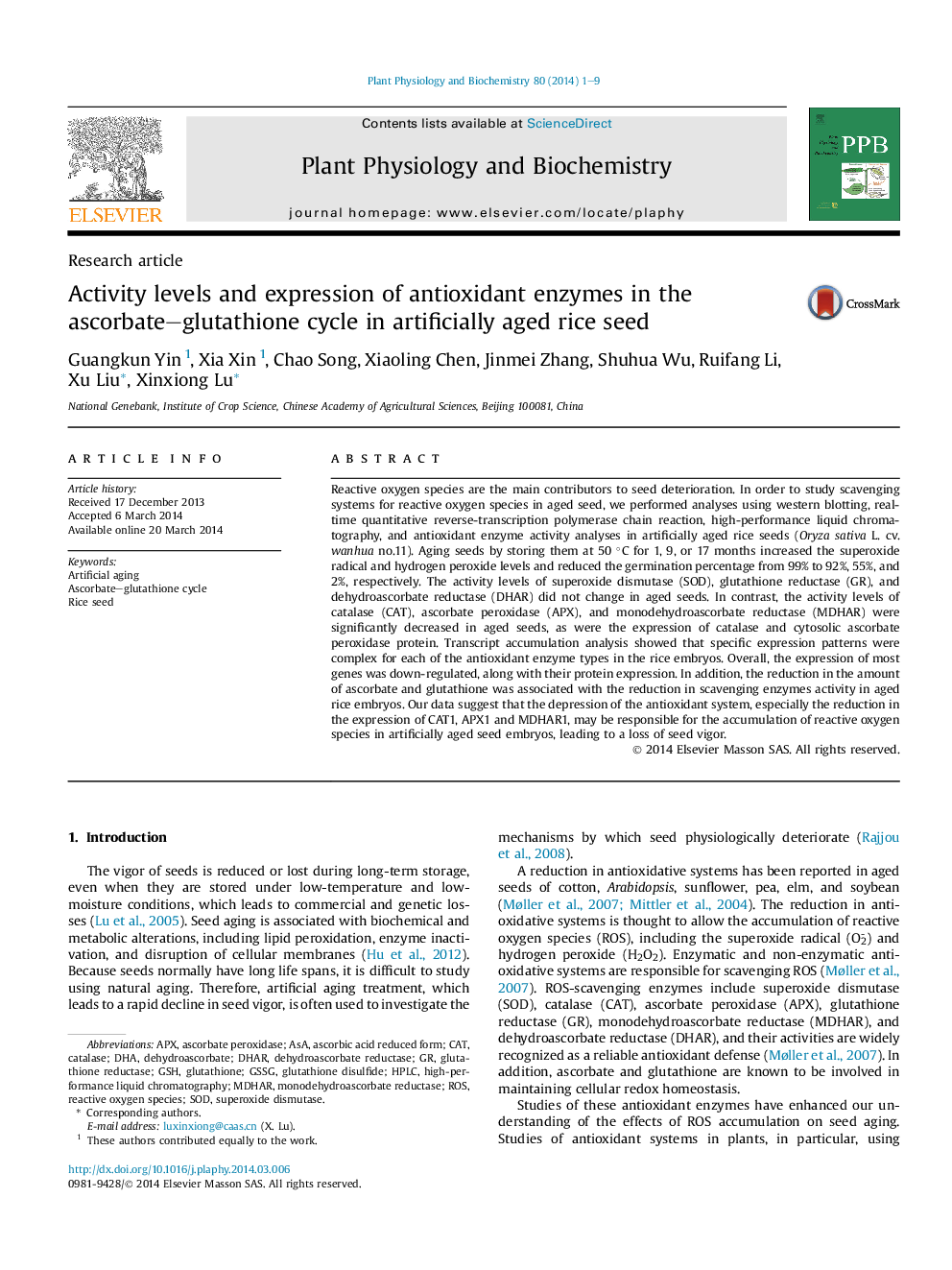| Article ID | Journal | Published Year | Pages | File Type |
|---|---|---|---|---|
| 2014806 | Plant Physiology and Biochemistry | 2014 | 9 Pages |
Abstract
Reactive oxygen species are the main contributors to seed deterioration. In order to study scavenging systems for reactive oxygen species in aged seed, we performed analyses using western blotting, real-time quantitative reverse-transcription polymerase chain reaction, high-performance liquid chromatography, and antioxidant enzyme activity analyses in artificially aged rice seeds (Oryza sativa L. cv. wanhua no.11). Aging seeds by storing them at 50 °C for 1, 9, or 17 months increased the superoxide radical and hydrogen peroxide levels and reduced the germination percentage from 99% to 92%, 55%, and 2%, respectively. The activity levels of superoxide dismutase (SOD), glutathione reductase (GR), and dehydroascorbate reductase (DHAR) did not change in aged seeds. In contrast, the activity levels of catalase (CAT), ascorbate peroxidase (APX), and monodehydroascorbate reductase (MDHAR) were significantly decreased in aged seeds, as were the expression of catalase and cytosolic ascorbate peroxidase protein. Transcript accumulation analysis showed that specific expression patterns were complex for each of the antioxidant enzyme types in the rice embryos. Overall, the expression of most genes was down-regulated, along with their protein expression. In addition, the reduction in the amount of ascorbate and glutathione was associated with the reduction in scavenging enzymes activity in aged rice embryos. Our data suggest that the depression of the antioxidant system, especially the reduction in the expression of CAT1, APX1 and MDHAR1, may be responsible for the accumulation of reactive oxygen species in artificially aged seed embryos, leading to a loss of seed vigor.
Keywords
monodehydroascorbate reductasedehydroascorbateGSSGASAMDHARdehydroascorbate reductaseCATDHARAPXGSHROSRice seedDHASODSuperoxide dismutaseascorbate peroxidaseArtificial agingAscorbate–glutathione cycleCatalasehigh-performance liquid chromatographyHPLCGlutathioneglutathione disulfideglutathione reductaseReactive oxygen species
Related Topics
Life Sciences
Agricultural and Biological Sciences
Plant Science
Authors
Guangkun Yin, Xia Xin, Chao Song, Xiaoling Chen, Jinmei Zhang, Shuhua Wu, Ruifang Li, Xu Liu, Xinxiong Lu,
